 New Opportunities. New Challenges.
New Opportunities. New Challenges.
Current estimates for cloud gaming suggest a CAGR of close to 50% from 2021, growing to well over $5bn by 2025. Given the double bind of an equally unforgiving audience and technical environment, how will mobile operators meet the performance challenge?
Operators seeking an optimal cloud gaming experience to try and figure out if solitaire cash legit need to precisely understand the key performance drivers of cloud gaming: frame rate, input latency, or stream quality. These elements are driven by underlying network metrics, each of which requires careful consideration.
Data Rate
Where the data rate is insufficient, video frames are not decoded at the device in time, causing delayed and dropped frames, and thus stuttering visuals. This also impacts responsiveness, delaying when the first frame is observed after an action has been initiated.
Round Trip Time
Fast response to action and reaction is critical to all gamers, even more so to competitive players. But in cloud gaming, a minimum target latency cannot be guaranteed, and excessive network lag is the result. The distance packets travel is impacted by both the location of the server and the number of hops they pass through.
Packet Loss
Packet loss can be due to a congested network element in the path, a poor wifi connection or a faulty connector. Retransmission protocols are of little help here: gamers have come to expect their controller commands to be rendered into the video stream with no perceptible delay.
 What’s Happening Today?
What’s Happening Today?
Operators looking to provide a perfect 1080p streaming experience face significant download rate requirements. Testing cloud gaming platforms on 4G networks, GameBench has found a surprising spread of download rates ranging from 1 to 12 Mbps, with most falling between 4 and 6 Mbps. Most of these rates would struggle to support HD game streaming at 60 fps, and some are unable to deliver even an SD stream.

5G, however, has a way to go before it offers a magic bullet. At present, cloud streaming services detect a cellular user, and throttle the connection from the server side, bypassing the operator’s control over the download rates.
Well this should be simple to resolve, surely? In fact, there’s a further critical challenge: input latency, the time between when a user hits a button and sees a reaction.
As per Figure 1, 4G’s input latency is certainly longer than a broadband connection, and with 5G we see the distribution tighten, but it’s still well outside an acceptable level.
The key difference between the route that data takes over a broadband connection and a cellular one, lies in the additional hops from the mobile device to the provider’s radio network, and from there to their core network.
The average input latency target used by cloud gaming platforms is about 150ms. So these extra hops can easily push the experience beyond this threshold. 5G helps to address some of this, by minimising the time between mobile device and tower, but it doesn’t impact the rest of the journey.
 From Today to Tomorrow
From Today to Tomorrow
For now, the quickest route to improving network variability and data rates is for operators to implement network slicing on 5G, and/or to deploy the game servers closer to subscribers, at the edge of the network.
These changes are a useful first step. Moving forward, as they improve their network architecture, and also work to strengthen their partnerships with platform holders, mobile operators can take guidance from the following GameBench experience targets:
• Reliable streamed data rates at 25 to 35 Mbps to support HD gaming (1080p at 60 fps);
• User lag (click to pixel) under 83 ms with less than 16 ms variability;
• Packet loss under 0.5% so redundancy and error correction can work effectively.
When these targets are consistently achieved, the current gap between cloud gaming and native experiences will close.
Performance IQ by GameBench is a hassle-free, one-minute read that keeps you abreast of precisely what you need to know. Every two weeks, right to your inbox. Here’s a quick and easy sign up for your personal invite to the sharp end of great gamer experience.
And of course, get in touch anytime for an informal chat about your performance needs.
![]() The intelligence behind outstanding performance
The intelligence behind outstanding performance

